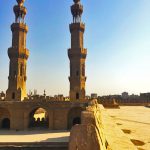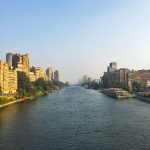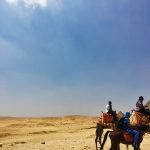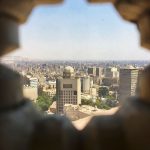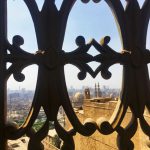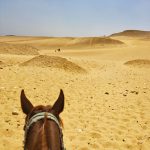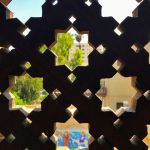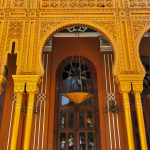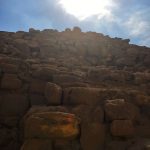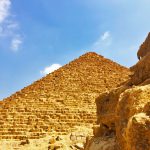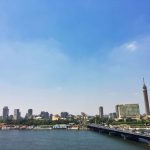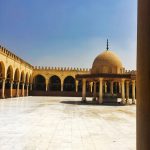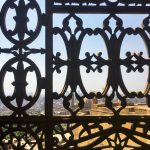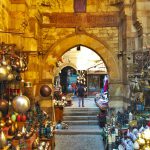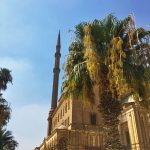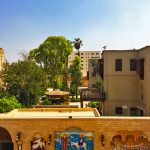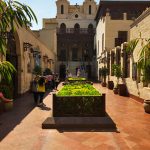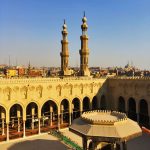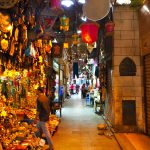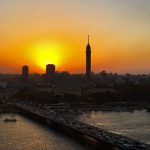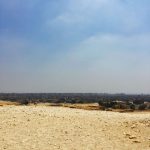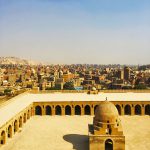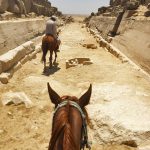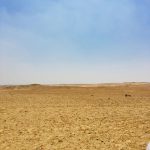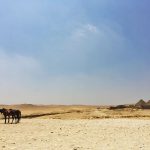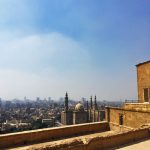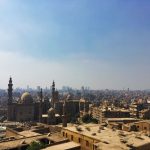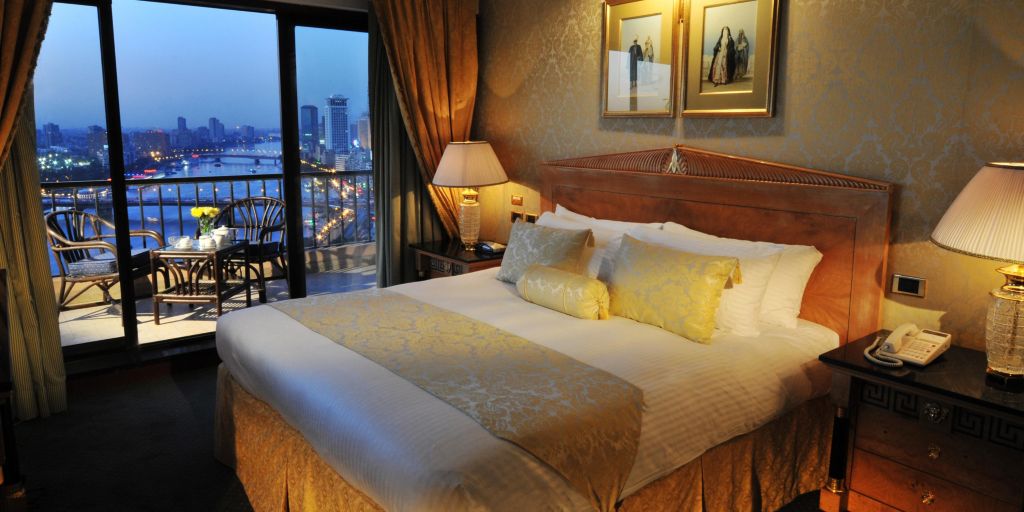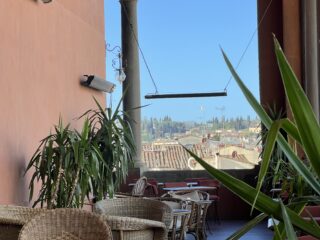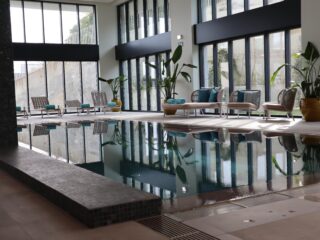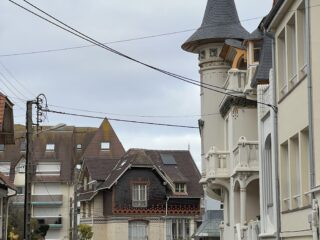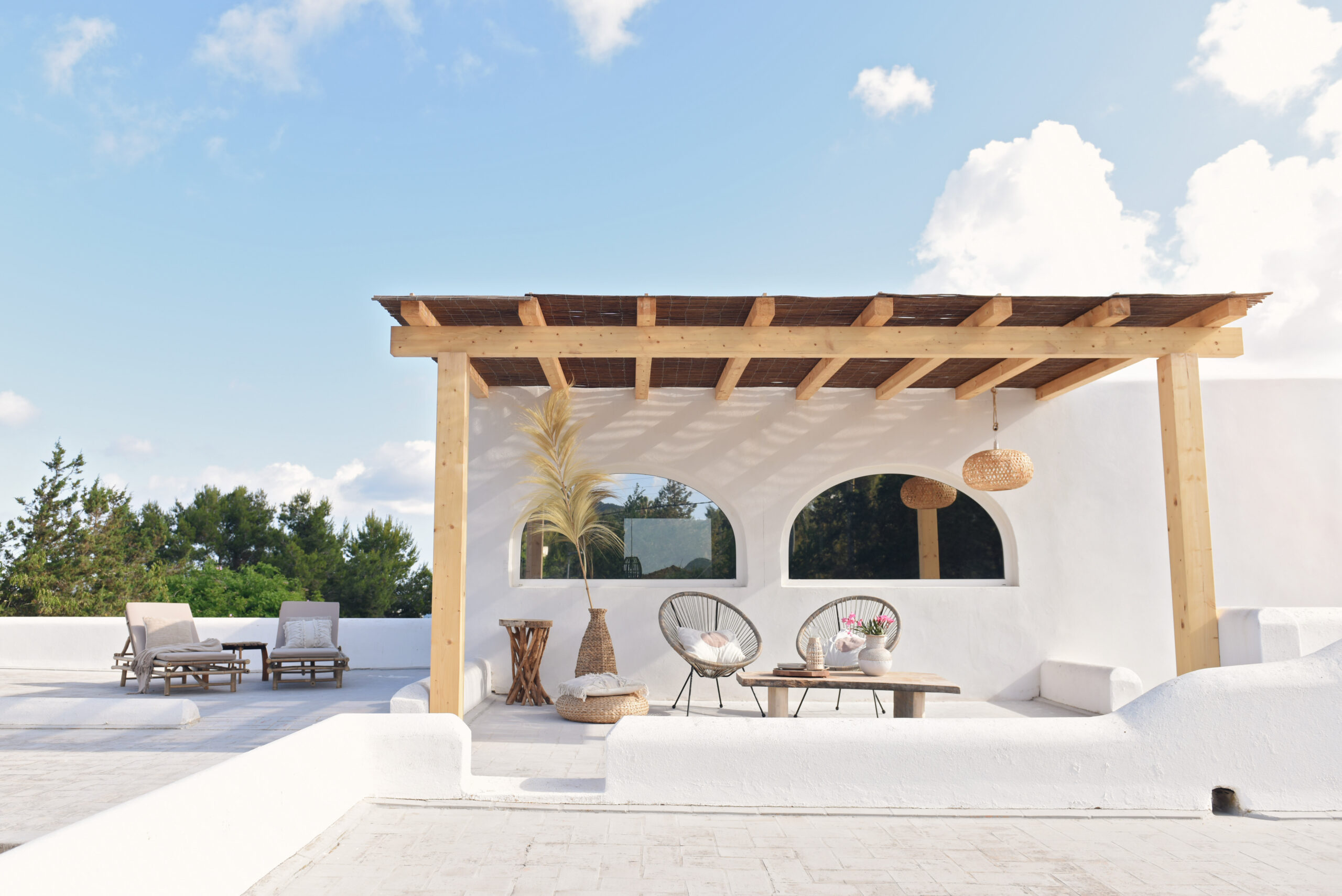Cairo, Egypt. The most challenging trip I’ve ever done, yet the most rewarding. Every crazy taxi ride through mosques and tiny alleys, every breathtaking and polluted sunset, every good and bad deal made with local merchants, every step into the desert with the Pyramids behind you. Cairo’s beauty resides in this unlikeness/divergence, as if the shades made the lights brighter.
What brings you here, to read about this city? Cairo is not for all, I should tell you that. Recent political and social changes have made the Egyptian capital a place where many Western Countries’ Ministers of Foreign Affairs strongly advise their citizens not to go, although I believe this is a little farfetched. “Tourists don’t know where they are, but know where they’re going. Voyagers know exactly where they are, but have no idea where they’re headed to.” Who are you exactly?
Cairo. Its official name is al-Qāhirah, “the Conqueror”, but is also known with other nicknames, like Kahire, which in Coptic means “place of the sun”, Umm al-Dunya (arabic for “the Mother of the World”), and often even Maṣr, which in Egyptian Arabic is the name for Egypt itself. With a population of 20 million people (some say even 30 million though), the current capital city used to host Pharaohs, Ottomans, British, French, and witnessed both bloody coups and golden periods.
Anyway, you might be here to actually read what to do in Cairo, so let’s stop beating around the bush and let’s get to the point.
Pyramids of Giza
Let’s start from the pyramids, which is probably the most famous attraction in the city. And there’s a reason or that: because they are wonderful.
To get there, take a Uber or Careem (I’ll talk about this topic at the very end – check it out to save a lot of money and hassle) direction Giza. From the city center, the trip lasts around 40 minutes, and because of its buildings and views, it is also part of the entire adventure. Beware of the people that at the entrance will try to convince that a guide tour on a horse or camel is fundamental for you. You can decide to listen to them, and you probably won’t be disappointed either (just make sure to set the price before you start the ride), or you can decide not to listen to them and enjoy your time with your travel buddies or by yourself in one of the most impressing places on Earth (if you haven’t noticed it yet, we recommend the second option). The area ticket is 40 LE (around 2€) and you have access to the area of the pyramids and the Sphinx, but to get really into the pyramids you have to buy further tickets (200 LE / 10€ for the Great Pyramid of Giza or Pyramid of Khufu, 40LE for the Pyramid of Menkaure, the one in the middle is not accessible). Is it worth it? Yes, for three reasons: 1- you’re entering the freaking pyramids that nobody knows exactly how were built and that are enormous and awesome; 2- it’s cheap, for the entrance and the two tickets you end up paying around 14€ (price for a lousy museum in Europe probably); 3- being there without getting in is a little funny isn’t it?
It’s also amazing to see the perfection of the tunnels, if we think that were built 4500 years ago and nowadays engineers and architects have all but a common theory about their construction.
Besides entering them, what else is there to do? You will be approached by different people with camels and horses, as it happened at the entrance, that will offer you a ride around and towards the Sahara, where you will get a fantastic view over the Pyramids and the desert itself. It’s a great experience, but look for someone who has a good relationship with their animals (even though you can never know): a lot of them are not treated very well.
Another thing to beware: the heat. If you go during summer, it’s going to be hot. Very hot. So take plenty of water with you (but you can find there water too for the price of 10 LE).
Coptic Cairo
Coptic Cairo is a relatively small part of Old Cairo that contains Christian churches and monuments. For example, the Hanging Church, built in the 3rd century AD on a Roman fortress. After visiting it, go to the patio and you’ll find a wooden door. Open it up and climb the stairs that bring you on top of a small tower, where you can have a nice view over the patio and beyond.
Since you’re there, visit the Church of St. George and the nearby cemetery.
Mosques
But most importantly, visit the mosque Amr Ibn El Aas, which is very close to the Hanging Church. Its original structure was the first ever built in Africa! Albeit its complete renovation through time, the atmosphere inside is impressive. Don’t forget to take off your shoes every time you get into a mosque, and to tip the guardian once you leave (10 LE is more than fine).
Because of the number of mosques present in the city, Cairo is also named “the city of a thousand minarets”, the tall and slender towers of mosques, with a small balcony on top where the Mu’adhin calls the prayers. Besides Amr Ibn El Aas, go to Ibn Tulun, the oldest mosque in Cairo surviving in its authentic form and structure. Make sure you get in from the left, and once you surpass the external gate turn right and keep walking. You’ll see a door on the wall in front of you. Climb the stairs, and you’ll be on top of a minaret, the oldest in town probably, looking over Islamic Cairo. It really is the city of a thousand minarets.
Tip: make sure you visit a mosque (or even better, a minaret) at the Afternoon Prayer call, which is around 15.30: being on top of a mosque whereas the whole city’s mosques call prayers is an experience can’t forget.
Other mosques you can’t miss: Al-Azhar Mosque, or the “shining one”, The Great Mosque of Muhammad Ali, which is situated in the Citadel of Cairo (a medieval Islamic fortification with different museums as well), Mosque-Madrassa of Sultan Hassan, Mosque of Sultan al-Muiayyad (if you give the Mu’adhin 30-40 LE he’s going to take you to the rooftop, the view from there is breathtaking).
But be ready to discover more and more as you walk around in Islamic Cairo (and don’t forget to share your discoveries with us).
Khan al-Khalili
This is likely to be the most famous souq, or marketplace, in Cairo. Here you can find scented and colorful spices, exotic silk, and much more. The market was built in the 14th Century by Al-Khalili after the Black Death. Constructed on the the site of the Za’afran Tomb, the burial place of the Fatimid rulers, it aimed at symbolizing a new start of the city and its life after the plague. It’s literally an immersion in the Egyptian folklore, and you’ll be amazed by the small shops and the activity in the area.
I highly recommend Khedr, the oldest house of herbs and spices in Egypt. This is the heaven for spices aficionados.
Zamalek
It’s the district located in the upper part of Gezira, the island in the middle of the Nile. This area is populated by expats, and you can find nice restaurants, bars and cafes. Have a Koshari, the typical Egyptian dish, at Zöoba, a shisha and some black tea with mint at Rooftop Zamalek, or a great view at the restaurant Sequoia.
Extras
Depending on how long you’re staying, you might consider visiting other things as well.
The Pyramid of Saqqara is located a little far from the city, and it may take you almost 2 hours to get there. But if you decide to hit the road, you’ll also have to check out Djoser and the Red Pyramid.
Al-Azhar Park, near the homonym mosque, was a gift by Aga Khan to the citizens of Cairo, and it’s place where to get away from the buzz of the city and admire the skyline from a different point of view.
There’s something magical in the suburbs of Cairo, ideated and designed by eL Seed, a French/Tunisian artist. “Perception”, that’s how he named it. In the neighborhood of Manshiyat Nasr, well known for the city trash collection, the French artist painted over 50 buldings an anamorphic piece of art that evokes the words of a Coptic bishop lived in the 3rd century: “anyone who wants to see the sunlight clearly needs to wipe his eyes first”. However, it’s highly advised to go with someone who knows their way around, since one can get easily lost.
Tips
Taxi – Make yourself a favor, download that app everybody is talking about and use it. Uber is hands down the best way to move around the city. It’s extremely cheap (so is Careem) and, to be honest, it’s also part of the experience. Besides driving through the crazy streets of Cairo (and thinking about their refined driving skills) you’ll see the city from within.
However, if you want to take taxis, or you don’t have any other choice, make sure you set the price before you leave, as most of them don’t have a taximeter and you risk to be charged way more than usual.
Also, don’t take phots of governmental stuff – Cairo is extremely photogenic, but don’t take photos of governmental buildings and people, since this is not very well seen from soldiers and police.
As regards hotels/hostels/flats: check out Airbnb or booking.com to save some money, you’ll definitely find something cool in the city center at a good price. Otherwise, we suggest staying at Kempinski or Semiramis, luxory hotels located along the Nile – you will love them!
Wrap up
Citis are to me like people, they have personalities. You build a relationship with a city, a give-and-take relationship – like friendship, for example. There could be mutual love, hate, sympathy, depending on how we are.
For tourists, Cairo can be a very nice city. A city where to spend a nice week, immersed in history and legends. But just a city to insert in the bucket list.
For voyagers, Cairo can be something else. It can be the city of adventures, of discoveries, of awe and wonder. It can be one of those cities that you know, once your flight takes off and, from your tiny seat you look down through the window, that someday you’ll come back to.
So, are you tourist or a voyager?

